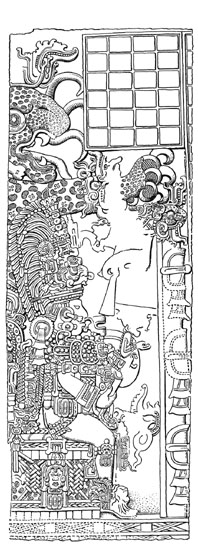

 | Page 1272 |  |
Tikal is famous for its lofty pyramid temples and other impressive architecture. The heart of Tikal, the so-called great plaza, is flanked on the east and west side by two great pyramids (Hasaw Chan K’awil was buried in the eastern pyramid); on the north side of the plaza is the ritual heart of the city, and on its south side is the great palace where the kings lived, received tribute, and held court.
Today, Tikal is surrounded by one of Guatemala’s national parks, and there is dense tropical forest on all sides. The site has been well developed for tourism, and access to it is very easy—certainly quite different from the several days’ ride on muleback that was the only way of access until the 1960s.

Part of a wooden door lintel from Temple IV,Tikal
(Image Select)
See also
References
Harrison, P. 1999. Tikal. London: Thames and Hudson
(1900–1993)
The professional career of the Australian zoologist, anthropologist, and archaeologist Norman Tindale began in 1917 when he joined the staff of the South Australian Museum in Adelaide. After early zoological work in Cape York and the Gulf of Carpentaria, Tindale moved into anthropological fieldwork in the 1930s, first (1933) in the Mann Ranges of South Australia and subsequently (1935) in the Warburton Ranges of Western Australia.
Tindale is most famous for his work at Devon Downs, a rock shelter on the Murray River in South Australia where the first evidence of cultural change in Australian prehistory was collected. Tindale also gained notoriety for his explanation of these changes as being the product of movements of prehistoric populations.
See also
See Bolivia
 |  |